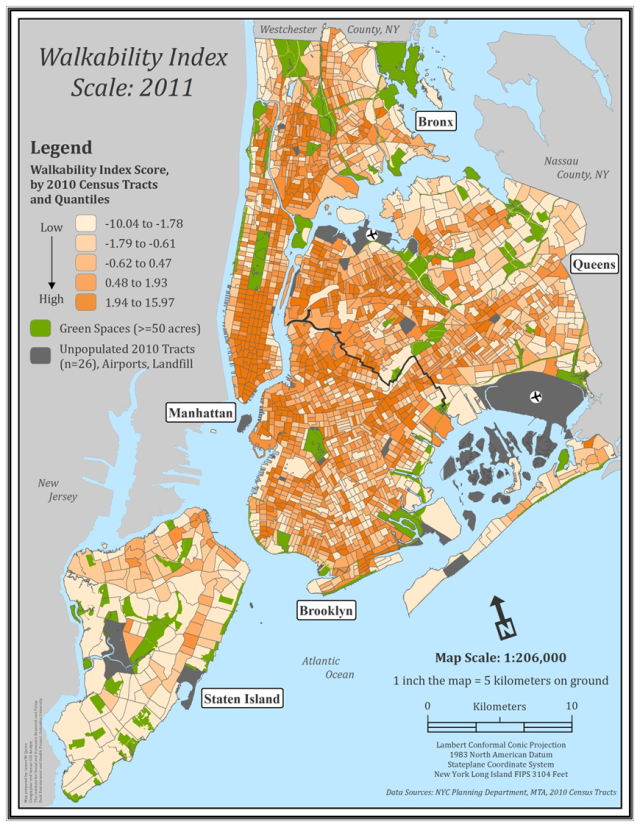We have conducted a series of analyses investigating whether “neighborhood walkability” is associated with lower body mass index (BMI), greater levels of physical activity, more pedestrian activity, lower risk for excessive gestational weight gain and better glycemic control for people experiencing diabetes.
Urban planners refer “neighborhood walkability” as the extent to which neighborhood design supports walking and they describe neighborhood walkability in terms of “the D’s” – density, diversity, design, destination accessibility and distance to transit. Density refers to attributes of interest per geographic area, diversity refers to the mix of land uses, design pertains to the layout of the street grid, destination accessibility is the availability of destinations to travel to such as stores, and distance to transit is the physical distance to public transportation. Additional neighborhood characteristics such as aesthetics and safety can also promote walking and are often described as being part of neighborhood walkability. We have developed a Neighborhood Walkability Index (NWI) that can be implemented across the United States going back to 1990.
Our papers on neighborhood walkability are HERE.




Pingback: New data on neighborhood walkability and active transport | Built Environmental and Health Research Group
Pingback: Poor NYC Neighborhoods “Less Conducive to Walking” Than They Appear | Streetsblog New York City
Pingback: How To Design More Walkable Cities
Pingback: Some thoughts on Buffalo’s livability | writing